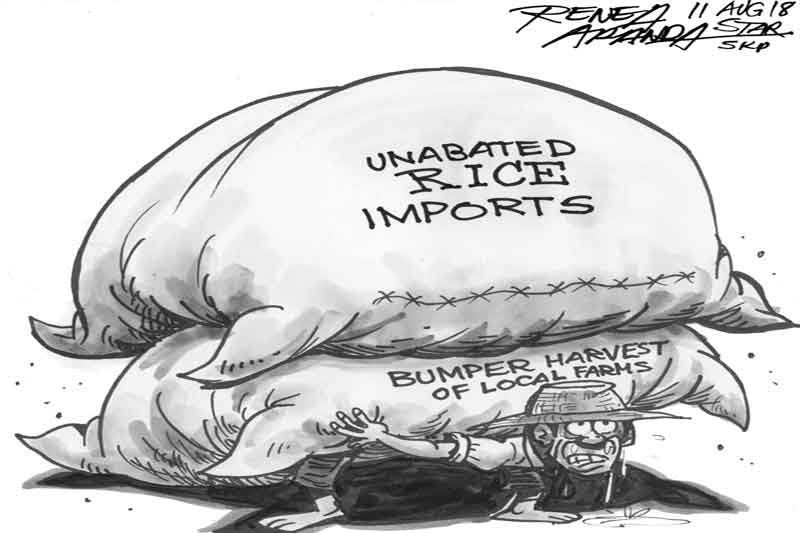EDITORIAL- Flood of imports

With inflation at a five-year high, it looks like the government has set its mind on flooding the market with imported rice. While any supply glut pulls down the price of a product, local rice farmers are naturally worried. Their gains from an expected bumper harvest later this year could be wiped out.
Has the government given up on its objective of making the country self-sufficient in its staple? Farmers, who are among the poorest in the country, want to know. There has been no official pronouncement from Malacañang, but those pushing rice importation are sending that message. The country, they argue, lacks the Mekong River system that ensures sufficient irrigation for the rice fields of Southeast Asia’s top producers Thailand and Vietnam. But the Mekong also passes through Cambodia, Laos and Myanmar, which are not major rice exporters.
There is such a thing as efficient water management. The Philippines is aiming merely to be self-sufficient rather than an exporter of rice. The lack of farm support facilities, however, compounds periodic irrigation problems. Millions of Filipinos depend on agriculture for their livelihood. With inadequate infrastructure and support facilities, rice fields in the lowlands could suffer the fate of the rice terraces in Banaue – a UNESCO World Heritage Site whose soil is threatened by giant earthworms, and which younger generations of Ifugaos no longer want to farm.
Consumers will welcome any reduction in prices especially of the country’s staple, although with the peso weakening, any price cut as a result of importation may be unsustainable. Even as policy makers rush to open the import floodgates, the government cannot abandon efforts to boost local rice production.
Millions of rice farmers are beneficiaries of the agrarian reform program and own small farms, with little or no capital to invest in mechanized operations and better irrigation systems. The government can set up centers in rice producing areas where marginalized farmers can rent machinery and other equipment at reasonable rates. The centers can provide micro lending facilities along with assistance for rice farmers at every step, from tilling the land to harvesting, threshing, sacking, transporting and marketing.
Proponents of rice tariffication and the expected flood of imports say the move is a necessary intervention to bring down rice prices. The interventions for increasing local rice production must be just as aggressive. The flood of imports must not sweep away the livelihoods of Filipino farmers.
- Latest
- Trending





























